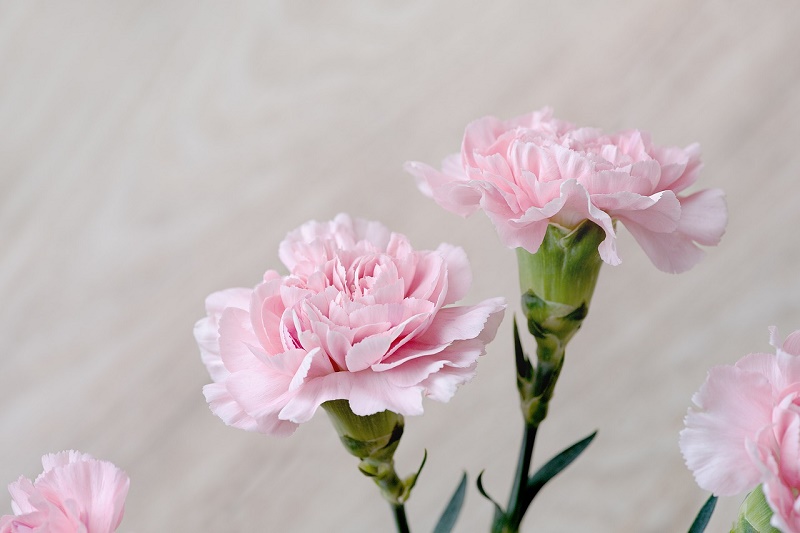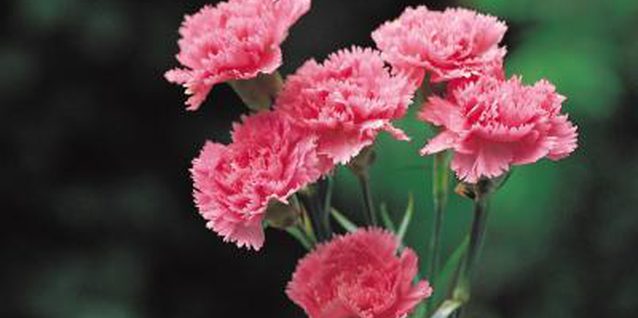
The carnation of the air is one plant that, perhaps, is the most curious, since they usually live always stuck or near the trees. It is usual that they wind their stems in their trunks or in their branches. It is one curiosity of this plant, which is also known as aerial tillandsia and that every time one tends to cultivate and care as an indoor plant. And the reason is none other than its flowers that are very pretty and have a peculiar pale pink color.
If you like this plant and do not know how to care for carnations of the air. This way you will be able to take care of it. You will get those flowers out to put a point of color and nature at home.
How to care for carnations?
The carnations of the air, as we have commented on previously. These are plants that are also known as Tillandsia sp – its scientific or botanical name – or aerial tillandsia and belonging to the family Bromeliaceae or bromeliads.

The aerial carnation is a type of epiphytic plant. That habitually lives attached to another species or inn on it, being the plant. It is common that is linked to trees that are not strange that surrounds its trunk or a part of it and even penda of its branches.
It is not considered a parasitic plant. It does not feed on the tree itself. In this other Green Ecology article, our colleagues explain everything about the epiphytic plants: what they are, types and examples.
Tillandsia is native to America. I increasingly see it in more habitats: from forests to even the desert because they have a great capacity to adapt to almost any weather and weather conditions.
And they also gain a presence in homes both inside and outside. Because of their great decorative power as a result of their shape, which is like starry, but also because of their flowers. It tends to be a pale pink up to a fuchsia or purple color. In some cases, they do not throw flowers, but their leaves change color towards that pinkish hue or towards a much lighter and paler green.
Basic care
The care of the carnations of the air or of the tillandsia plant is not very exhaustive because it is a species that adapts very well to the different climatic conditions. Anyway, it is always advisable to know a series of care and specifications to get it to grow and develop in better conditions:
Temperature
It can be both inside and outside of a home. In general, it survives perfectly at temperatures ranging between 10 and 30 degrees Celsius, although air carnations can also live at lower temperatures – even up to ten degrees Celsius below zero – or higher than that maximum of 30 degrees. However, not all air carnations survive the low temperatures and frosts. So, if you have outdoor or terraces, it is better to protect the plants on those days.
illumination
Tillandsia, like any plant belonging to bromeliads, needs to be located in a place where there is plenty of natural light because it needs it to grow. In addition, you can give the sun directly. Avoid the hours of more heat and intensity of solar radiation.
Irrigation
The degree of humidity of the air depends on the climate of the zone in which it is lived. It is that this plant has to be pulverized. It is, wetting its leaves and not watering like others, although the water does not have to stay stagnant in them so they do not rot. For example, if you live in a dry area, you should always spray the leaves with water at least once a week. A frequency that is convenient to shorten when it is hot, as when temperatures of 30 degrees are exceeded. If you live in a more rainy and humid area, it may be sufficient to moisten and pulverize its leaves once a week.
Fertilizer
It can be applied occasionally, applying it with the spraying done. However, it is not a plant that needs large extra inputs of nutrients to live. Learn here How to make natural fertilizer and so you can do the necessary just to dilute a little in the water you are going to used to spray in the air carnations.
Pests
Actually, the carnations of the air are one of the most fortunate plants. It is not usual for pests to affect them because of their great resistance. However, it never hurts to be alert to detect them, especially by contagion from other plants or by excess moisture. Primarily, aphids, mites, and fungi may appear.
Reproduction
Cuttings do the reproduction of the air after flowering, which usually occurs in the spring and summer seasons. However, it is not good to cut the children of the carnations of the air as soon as they appear, but it is better to let them grow and be longer before making the separation or reproduction.
Even if you want to have several air carnations together, you do not need to plant them in other pots or place them near other trees. You just have to let them grow, and you will see that it appears as a kind of colony of tillandsias formed around the one you already had initially.
With these tips on how to care for carnations of the air, we hope in this article have helped you to know more about this plant of the family of bromeliads. So that it grows well and develops without problems at home, either on the terrace or inside some bright room.
